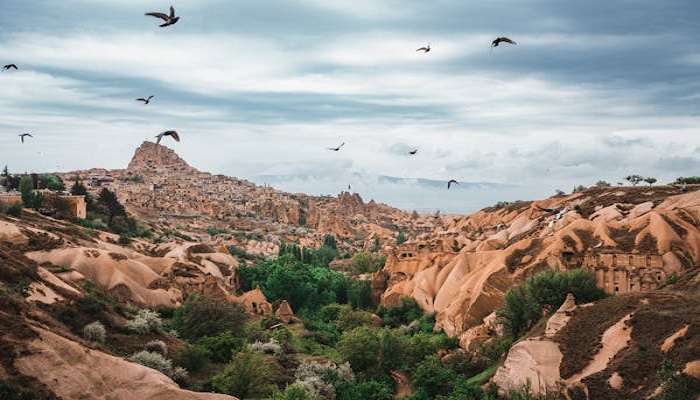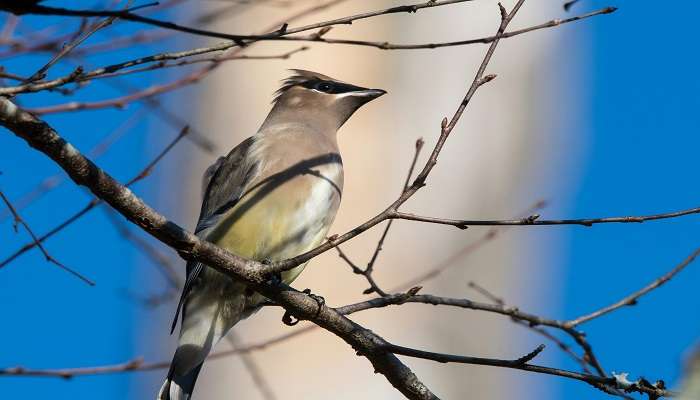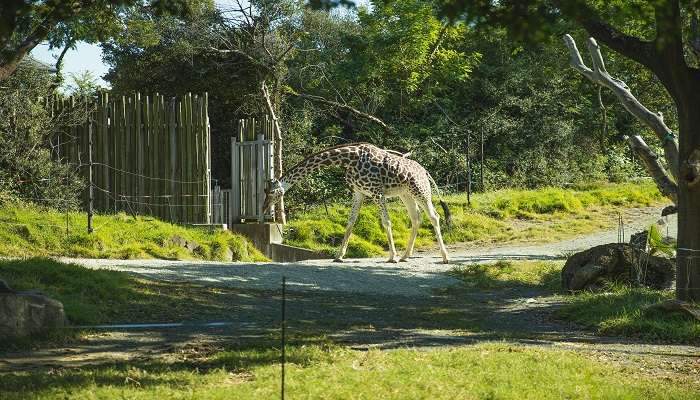Enjoy The Serene View At Trishna Wildlife Sanctuary In Tripura In 2025

Situated about 111 Km from Agartala, the Trishna Wildlife Sanctuary is spread over 194.704 sq. km. It is a protected area that strongly focuses on preserving biodiversity, wildlife, and nature. Alongside healthy forest cover and a plethora of plants, the great attraction of this wildlife sanctuary lies in a sizable population of Gaur or Indian Bison. It also has a fair stock of avifauna populations integral to the prevalent ecosystem of the Sanctuary. Another facet of the Trishna Wildlife Sanctuary is that it is a habitat and home for the highly endangered ape species of the Indian subcontinent, i.e., the Hoolock Gibbon and the primates like the Capped Langur and Golden Langur. Come and explore this wonderful place and make unforgettable memories. Read this blog to know more.
About Trishna Wildlife Sanctuary

Trishna Wildlife Sanctuary is well-known for its wide range of flora and fauna. Spread over an area of approximately 195 sq km, it was formed in 1988. The sanctuary covers four types of vegetation – the tropical semi-evergreen forest, the east Himalayan lower Bhanar sal, the Moist mixed deciduous forest, and the Savanna woodland. Here, one can find a range of tree species, herbs, shrubs, climbers, and grass. The sanctuary has 230 tree species, 110 shrubs, 400 herbs, and 150 climbers. One can also find medicinal plants here. Some prominent medicinal plant species are Kurcha, Sarpaganda, Rudraksha, Tulsi, Vasak, Chirata, Bel, and Kalamegh. It is where school-going children, academicians, botanists, environmentalists, taxonomists, and visitors can learn about wildlife. Education, Awareness, Entertainment, and Amusement programs are held here.
Some of the major attractions of the sanctuary are the bison, Deer, Hoolock Gibbon, Indian Gaur, Golden langur, Capped langur, and Pheasants. The reptiles are also housed here. One can easily spot the resident and migratory birds of different species here. Some of the primates that inhabit the sanctuary are Hylobates hoolock (Hoolock Gibbon), Trachypithecus phayrei (Spectacled langur), Macaca mulatta, (Lalmukh Bandar), Bos gaurus (Indian Bison), Capped Langur, Wild boar, Felis chaus, i.e., Wild cat, and Leopard. Easily accessible to and from Agartala, the sanctuary offers a unique blend of adventure and serenity that invites visitors to explore its natural beauty. For earnest wildlife enthusiasts or nature lovers, the Trishna Wildlife Sanctuary has always been seen to repay both with an enriching experience amidst the untouched beauty of northeastern India.
Also Read: Things To Do In Tripura
Things To Do At Trishna Wildlife Sanctuary
Trishna Wildlife Sanctuary has several activities that would make visitors relate to the place. The top five things to do here are as follows:
1. Wildlife Viewing

The sanctuary’s rich biodiversity can be explored by watching its unique wildlife, such as the Malayan giant squirrel, various deer species, and scores of bird species. The best viewing time is early in the morning and late in the afternoon. The temperature at this point is usually cool, allowing animals to move freely in search of food or find appropriate shelter.
A pair of binoculars and a camera will add more sparkle to your experience and help you grasp those wonderful moments for the future. This makes a wildlife adventure educational and memorable, with guides worthwhile in showing not just the presence of animals but also their behaviours and assisting in spotting elusive species.
2. Bird Watching

Trishna Wildlife Sanctuary is a haven for bird watchers, as many types of birds—resident and migratory—are found here. Binoculars and a good field guide will be necessary for spotting these species that inhabit the sanctuary. The best time for birdwatching is early morning; during this time, birds usually show the most activity. Different species of birds visit the sanctuary’s varied habitats, including wetlands and forests.
This provides good opportunities to view some rare and elusive birds. Bird watching is an activity that will give you a chance to appreciate the sanctuary’s avifaunal diversity and associate it with its conservation.
Related Post: Things To Do In Agartala
3. Photography

The landscapes are beautifully clad, and so is the varied wildlife of the sanctuary, which needs to be shot with a camera. Trishna Wildlife Sanctuary offers a variety of landscapes, from thick forests to vast grasslands, which provide a good scope for wildlife photography and landscape photography. It takes patience, a sharp eye for detail, and inspiration to capture rare wildlife and breathtaking scenery.
Clicking photographs should be done while keeping the sanctuary regulations in mind to avoid disturbing the wildlife in their natural habitat. The variety, perspectives, and moments captured here will remain an immortal memory of having visited this beautiful natural haven.
4. Adventure Jeep Safari

Get the adventure jeep safari experience in the Trishna Wildlife Sanctuary. This exhilarating ride will take you through the sanctuary’s rough terrain to areas not easily accessible by foot. These safaris are conducted in specially designed vehicles, giving one a closer view of the wildlife and landscape.
Safaris also present an exciting way to spy on elusive animals and enjoy a panoramic view of varied habitats. Guides will accompany the safari and provide insight, enhancing your experience. The adventure jeep safari brings together fun, excitement, and exploration—the essence of the visit.
Related Post: Wildlife Sanctuaries In Tripura
Trishna Wildlife Sanctuary Opening Hours And Entry Fees

Trishna Wildlife Sanctuary is open to visitors from 9:00 AM to 5:00 PM, except on Tuesdays when it is closed. The entry fee per person is Rs. 6.
This is enough time to move around, spend quality time with the wildlife, and maintain a typical day for the sanctuary’s regular upkeep.
Best Time To Visit Trishna Wildlife Sanctuary

Trishna Wildlife Sanctuary is best visited from November to March. In these months, the weather ranges from excellent to dry, thus making it suitable for watching wildlife and other outdoor activities. Temperatures remain pleasant, and the humidity is low, thus making the conditions ideal for visibility and general trekking.
Many animals are also active during this time of year, increasing the possibility of ascertaining various species. On the other hand, the monsoon season from June to September is accompanied by heavy rainfall, which spoils travelling and sightings of wildlife.
Related Post: Places To Visit In Tripura
What Are The Best Ways To Reach Trishna Wildlife Sanctuary?

Transport to Trishna Wildlife Sanctuary is not a big problem, as numerous options are available. The best ways by which one can reach the sanctuary are as follows:
Air: The closest airport is Maharaja Bir Bikram Airport, also known as Agartala Airport. It is nearly 130 km from the sanctuary. From the airport, one can hire a taxi or use local transport services to go to Trishna.
Train: Agartala Railway Station connects to major cities like Kolkata and Guwahati. It is hardly 10 to 15 kilometres from the railway station and usually takes 15 to 20 minutes.
Road: State and private bus services connect Agartala quite well to different parts of the state and neighbouring states. From the city centre bus station, one can hire a local taxi or an auto rickshaw to the museum, which is about 10 kilometres away and takes 15-20 minutes.
You May Also Like To Read: Places To Visit In Agartala
Trishna Wildlife Sanctuary is, therefore, one of the alluring spots for nature and wildlife lovers. Thus, it offers quite a good chance for exploration and observation. From strange species to different landscapes, this biodiversity forms a basis for exploration. The best time to visit is November to March, when the weather is comfortable, and there are excellent conditions for viewing wildlife. If adventure activities draw your interest or if you are seeking a relaxation vacation, plan a trip to North East. Experience the unforgettable Northeastern State of India in this destination, seamlessly combining beautiful memories with a commitment to conservation in all its natural beauty and charm. But this superb environment makes Agartala one of those places that no nature and wildlife enthusiast would ever like to miss in the world.
For our editorial codes of conduct and copyright disclaimer, please click here.
Cover Image Source: Facebook
Frequently Asked Questions About Trishna Wildlife Sanctuary
Why is Trishna Wildlife Sanctuary famous?
Trishna Wildlife Sanctuary is famous for its diverse and rich biodiversity, including rare species like the Malayan giant squirrel, deer species, and numerous birds. The sanctuary's diverse ecosystems, including dense forests and wetlands, provide critical habitats for these species.
What is the area of Trishna?
Trishna Wildlife Sanctuary spans approximately 589 square kilometres. This vast area encompasses a variety of landscapes, including lush forests, grasslands, and wetlands, creating a diverse environment that supports a wide range of wildlife.
Which railway station is near Trishna Wildlife Sanctuary?
The nearest major railway station to Trishna Wildlife Sanctuary is Agartala Railway Station, about 130 kilometres away. Visitors can reach the sanctuary by road from Agartala, accessible via well-maintained highways.
What are the best times to visit Trishna Wildlife Sanctuary?
The best times to visit Trishna Wildlife Sanctuary are between November and March, when the weather is dry and cool, enhancing wildlife visibility and comfort. The monsoon season, from June to September, can lead to heavy rainfall and challenging travel conditions.
Are there accommodation options available within the sanctuary?
Trishna Wildlife Sanctuary offers several accommodation options, including forest lodges and guesthouses. However, these options are limited and can be filled quickly. Therefore, it is recommended that you book these accommodations well in advance to ensure a comfortable stay during your visit.
People Also Read:
Wildlife Sanctuaries In Gujarat Wildlife Sanctuaries In Kerala Wildlife Sanctuaries In Arunachal Pradesh

Unveil the hidden treasures of the globe and turn every travel dream into reality. As a Content Writer, I am passionate enough to craft stories from ancient wonders to modern marvels. My words paint the picture-perfect itinerary for unforgettable experiences. Let my words be your trusted guide to immerse in the diverse culture and discover the beauty of the unknown.











